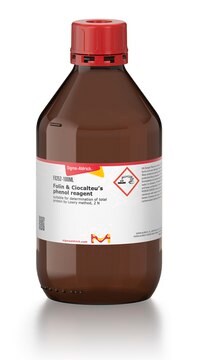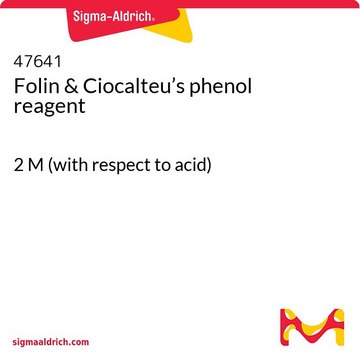About This Item
Recommended Products
vapor density
2 (vs air)
Quality Level
vapor pressure
184 mmHg ( 20 °C)
Assay
≥99.5%
form
liquid
expl. lim.
13.2 %
impurities
<0.5% water
evapn. residue
<0.001%
refractive index
n20/D 1.359 (lit.)
pH
5-6 (20 °C, 395 g/L)
bp
56 °C/760 mmHg (lit.)
mp
−94 °C (lit.)
solubility
water: miscible
density
0.791 g/mL at 25 °C (lit.)
application(s)
histology
format
neat
SMILES string
CC(C)=O
InChI
1S/C3H6O/c1-3(2)4/h1-2H3
InChI key
CSCPPACGZOOCGX-UHFFFAOYSA-N
Looking for similar products? Visit Product Comparison Guide
General description
Application
- As a precursor for the synthesis of methyl isobutyl ketone (MIBK) in the presence of sulfonated graphene oxide-Pd/cordierite catalyst.
- Synthesis of (4-hydroxymethyl-2,2-dimethyl-1,3-dioxolane), a solketal from glycerol using supercritical fluids (SCF) technology.
- As a starting material to synthesize methyl methacrylate.
- 1-isopropylidene-2-methylhydrazine
- 1-isopropylidene-2-hydroxyethylhydrazine
- 1-isopropylidene-2-formylhydrazine
Signal Word
Danger
Hazard Statements
Precautionary Statements
Hazard Classifications
Eye Irrit. 2 - Flam. Liq. 2 - STOT SE 3
Target Organs
Central nervous system
Supplementary Hazards
Storage Class Code
3 - Flammable liquids
WGK
WGK 1
Flash Point(F)
1.4 °F - closed cup
Flash Point(C)
-17.0 °C - closed cup
Regulatory Listings
Regulatory Listings are mainly provided for chemical products. Only limited information can be provided here for non-chemical products. No entry means none of the components are listed. It is the user’s obligation to ensure the safe and legal use of the product.
FSL
Group 4: Flammable liquids
Type 1 petroleums
Hazardous rank II
Water soluble liquid
ISHL Indicated Name
Substances Subject to be Indicated Names
ISHL Notified Names
Substances Subject to be Notified Names
JAN Code
534064-20L:4548173167190
534064-18L-CS:
534064-VAR:
534064-500ML:4548173167237
534064-BULK:
534064-4L:4548173167206
534064-4X4L:4548173167213
Choose from one of the most recent versions:
Already Own This Product?
Find documentation for the products that you have recently purchased in the Document Library.
Customers Also Viewed
Our team of scientists has experience in all areas of research including Life Science, Material Science, Chemical Synthesis, Chromatography, Analytical and many others.
Contact Technical Service






